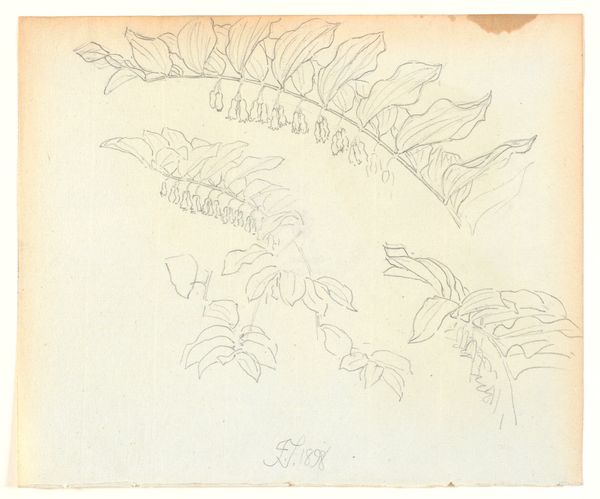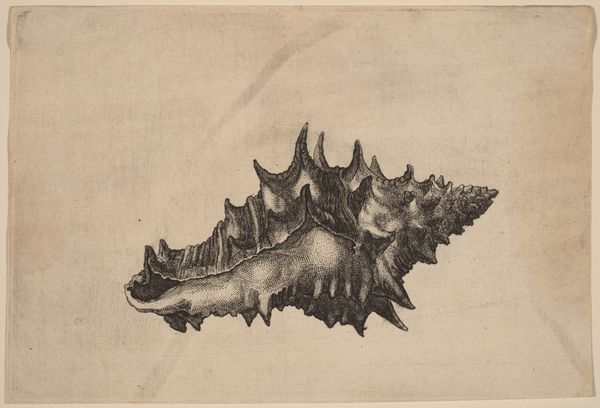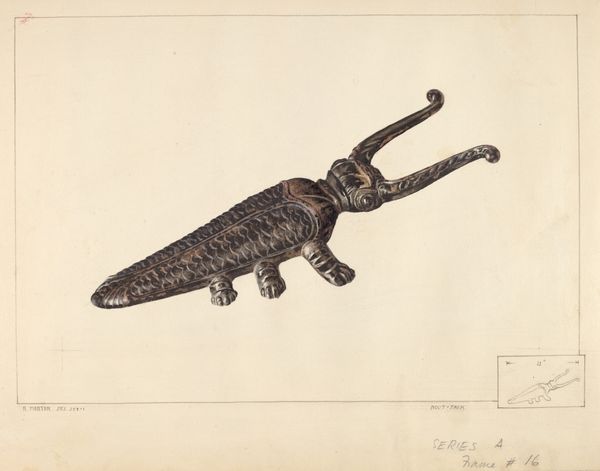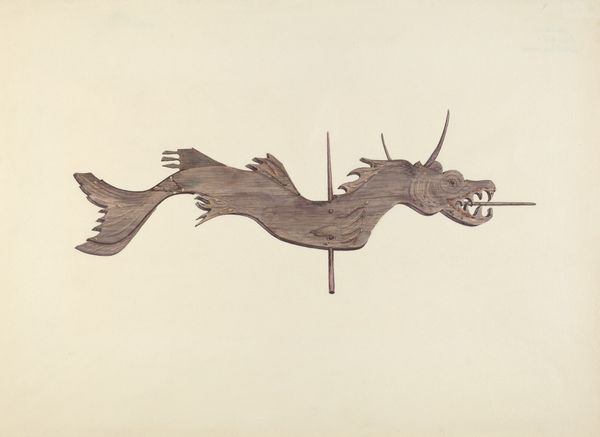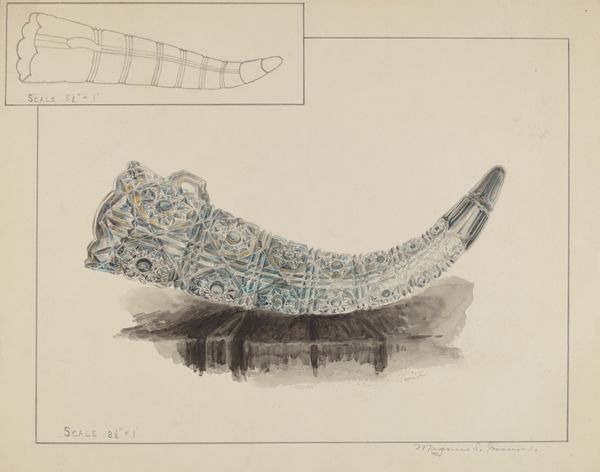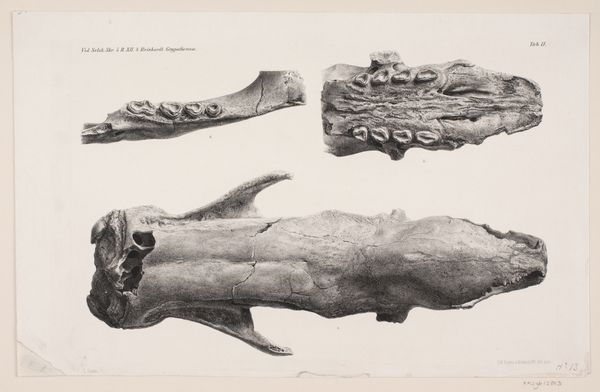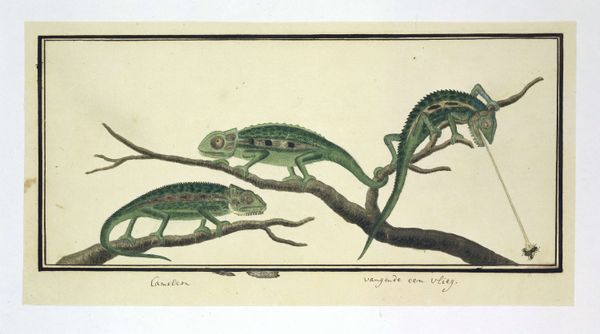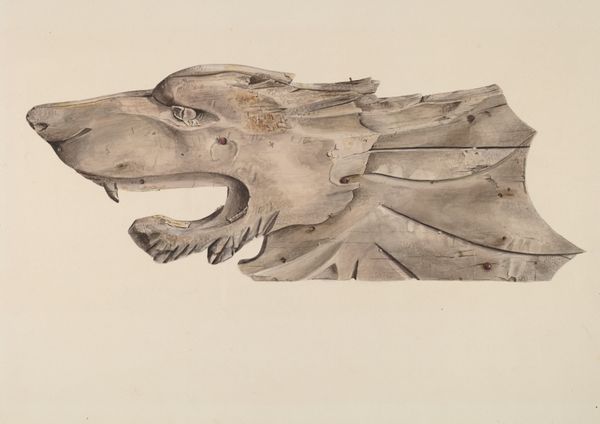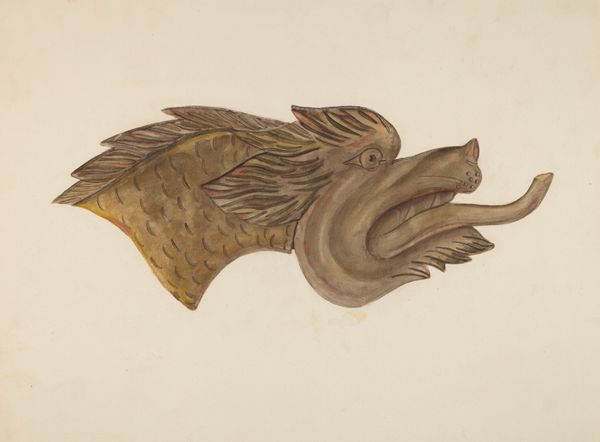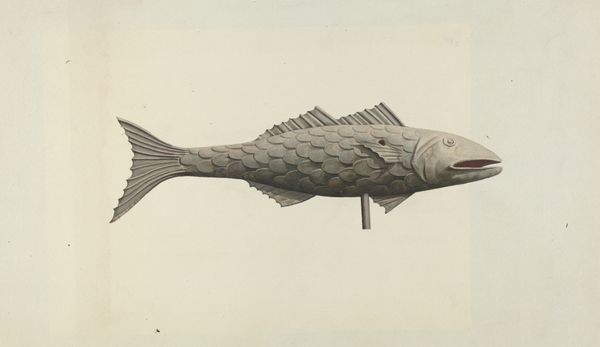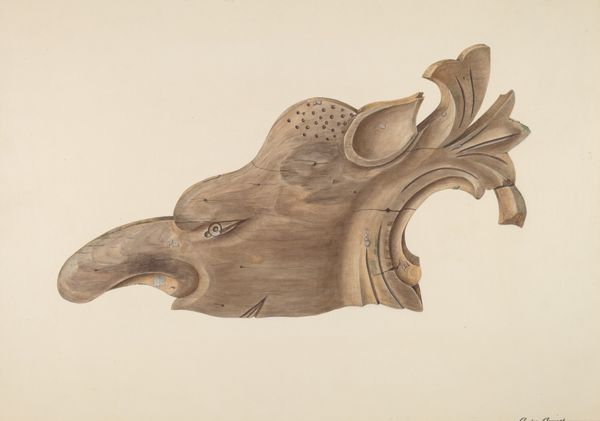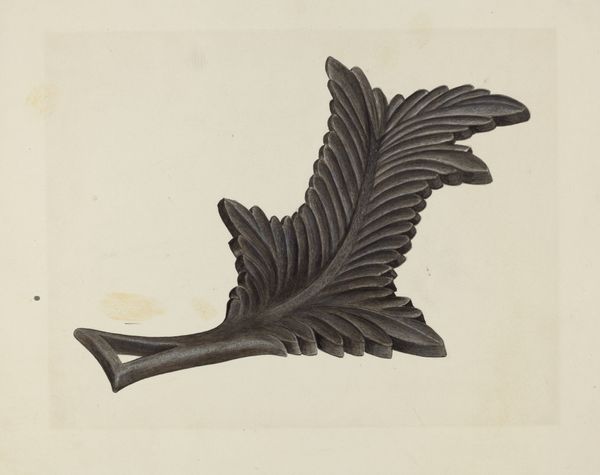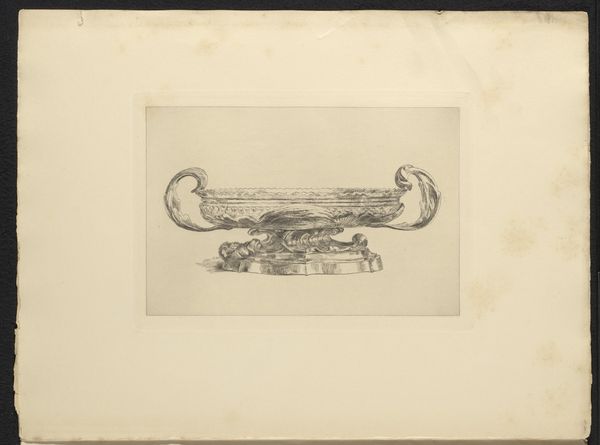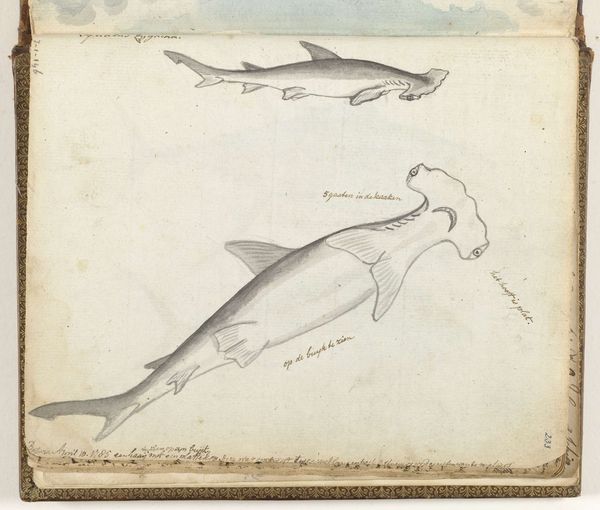
drawing, metal, watercolor
#
pencil drawn
#
drawing
#
metal
#
watercolor
#
watercolour illustration
#
watercolor
Dimensions: overall: 28.9 x 36.7 cm (11 3/8 x 14 7/16 in.) Original IAD Object: 6" high; 13 7/8" long; ring: 5 1/2" in diameter
Copyright: National Gallery of Art: CC0 1.0
Curator: Here we have John H. Tercuzzi's "Lamp Bracket," a watercolor and pencil drawing from around 1940. Editor: Immediately, the ornate, almost theatrical detail catches my eye. It's as if a fragment from a bygone era has been unearthed, whispering tales of grand interiors. Curator: That’s a compelling point. Tercuzzi's work sits at an interesting intersection. On one hand, it’s a utilitarian object—a lamp bracket—but its very design hints at aspirations beyond pure function. The floral motif, the way the metal seems to drip down like molten wax – this piece is invested in ideas of craftsmanship. Tercuzzi positions an image of manufactured design alongside the aesthetics and the philosophy of design and handcraft from its own historical time. Editor: Absolutely. And within those drips and floral patterns lies a rich symbolism. Consider the leaf—a classic symbol of growth, renewal, even hope. Placed adjacent to the cup-like holder—suggestive of holding light, of knowledge—we encounter a profound pairing. The image seems invested in making sacred an otherwise everyday and quotidian scene. Curator: Yes, the light it would cast—illuminating spaces, literally and metaphorically, it reflects a certain post-Depression-era hope for revitalization and brighter futures, doesn't it? I see how this reflects the era's social context, moving towards modern designs while still holding onto ornamental motifs. Editor: Indeed. In many ways, these forms could be analyzed as cultural palimpsests. The metal is rendered almost as fluid in the watercolor technique – yet it's depicted in a traditional drawing style. This very image evokes a sense of cultural continuity. And so we arrive at the question, are such visual artifacts of utility still resonant for a culture and society increasingly reliant on non-material forms of communication? Curator: The symbolism, the artistic choices—all funnel us to questions of cultural identity during a period of great transformation and rapid global communication and influence on American design and culture. Editor: It certainly is an artifact layered with meaning. Thinking of art history, its placement within Tercuzzi's time provides us with context, and his choice to use accessible materials in order to make it may comment on class status during his era. Curator: Thank you for illuminating so many important facets, visually and socially. Editor: A rewarding discussion! I find myself reconsidering not just Tercuzzi's intentions but how its artistic context reverberates even today.
Comments
No comments
Be the first to comment and join the conversation on the ultimate creative platform.
